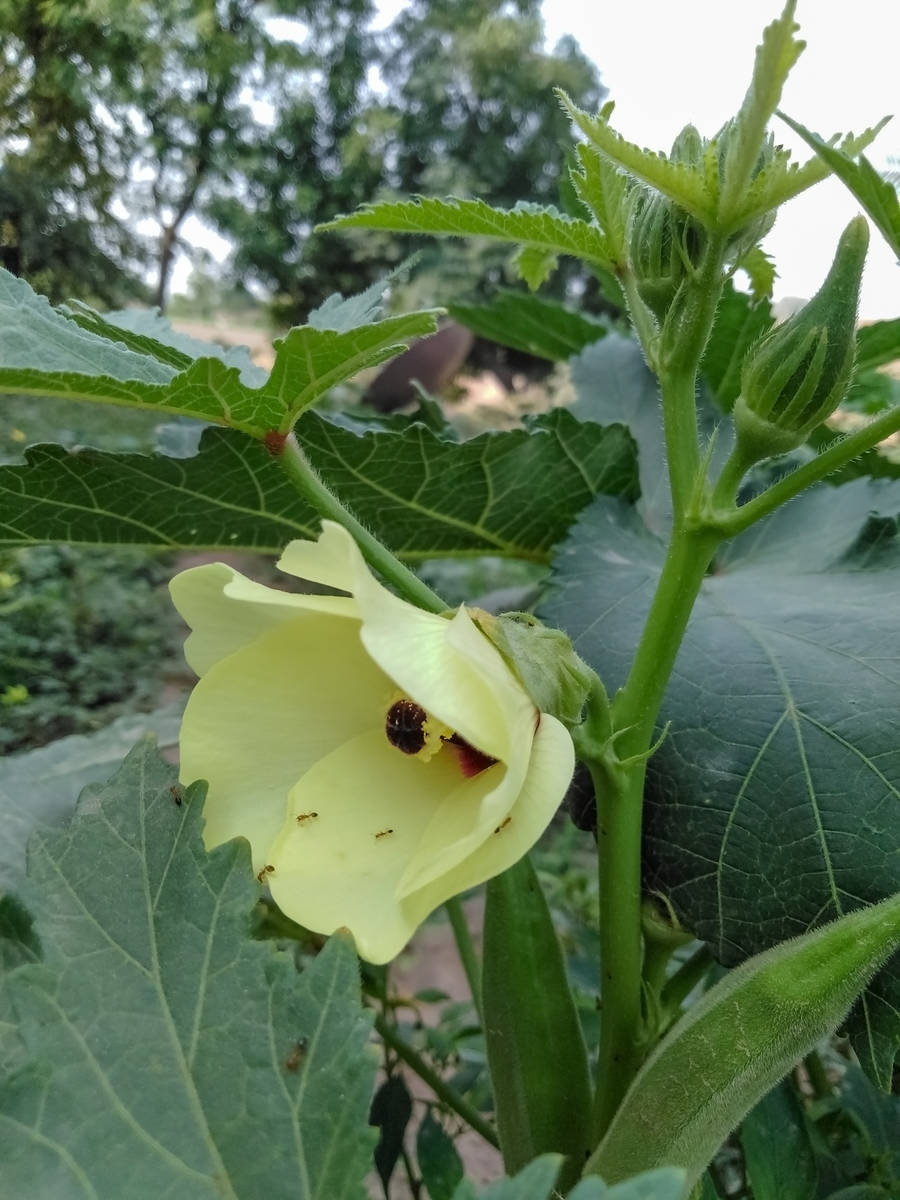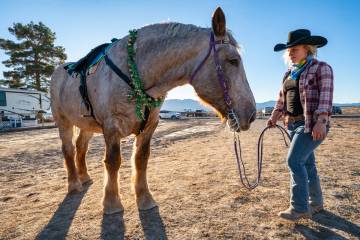IN SEASON: Okra, a southern favorite for your western garden
Okra may be considered a staple crop in the American South, but it also grows very well in our hot dry climate. As a member of the mallow family, it puts on a stunning display of delicate yellow flowers.
Okra is a love or hate food. Fresh okra is often hard to find at the grocery store and not very common at the local farmers market, either. This makes growing okra yourself worth the effort if you are one who loves it. For those of you that do, the good news is that it is one of the easiest vegetables to grow.
Basics of planting and growing okra
Originally cultivated in Africa, okra loves the heat. Okra seeds can be started indoors in early to mid-February, or direct seeded into the garden once overnight temperatures are consistently above 60 degrees. In our area, this is usually near mid-April to early May. Seedlings can be transplanted outdoors at this time as well. Transplant your seedlings very gently as okra does not like to have its roots disturbed.
Prepare your soil a week or two before planting by amending it with a rich layer of compost. Plant two to three seeds fingertip deep, at least 1 foot apart, in a spot that receives at least eight hours of sun per day in the summer. Okra plants grow to about 3 feet tall with some varieties reaching up to 6 feet high. Okra should not be planted with other sun-loving plants as it will shade them out.
Once the seedlings emerge, thin to just one plant per foot. This is also a good time to apply an inch or so of a light-colored mulch, such as straw. This will help conserve moisture during the hot summer days. Keep at least a 2-inch ring around the base of the plant free from mulch.
Once you have planted out your seeds or seedlings, water them in with a good soaking, and water daily until established. Once established, water okra on the same watering schedule as other vegetables in your garden. I have my dripline set to water twice a day for 10 minutes when daytime temperatures are between 70 and 90 degrees and three times a day for 10 minutes when daytime temperatures are over 90 degrees.
During the growing season, I like to give my okra plants a weak compost tea feeding at least every other week. If compost tea is not available, organic fish emulsion is another good option. If using fish emulsion, follow the manufacturer’s instructions on the label.
Okra is fairly hardy and not prone to very many problems, but it is not immune to issues. If planted too early or a cold snap comes along, okra will suffer and grow slowly. Once the temperatures heat up, okra will hit its stride and grow at a rapid rate.
In our region, there are not many insects that favor okra, but one exception is fire ants. Fire ants may damage the flowers and cause them to drop. When you spot fire ants in your garden, try to trace them to their source. When I find fire ant hills, I bring a big camping kettle full of water to rolling boil and pour the boiling water into the entrance. I repeat this over the next few days until the ants are gone.
Harvest at the optimum time
Okra is self-pollinating, and once it starts producing, it is very prolific. When you start to notice pods forming, check the plants daily. The pods can grow to full size in just a few days. For the best flavor and texture, pick the pods when they are between 1 to 2 inches long. If you’ve come to think of okra as slimy, it is probably because you had okra that was harvested past its peak.
When the pods are left to grow too long, they get woody and stringy. Overgrown pods need to be removed from the plant. If they are left on the plant, it may slow down or stop production altogether.
To harvest the pods, cut the stem away from the plant just above the pod with a pair of pruning shears. Do not try to tug or pull the pod from the plant, as you may accidentally break or tear the stem. You may want to wear gloves when harvesting, as some varieties of okra can cause skin irritation.
After you have harvested the okra pods, refrain from washing them until you are ready to use them. Keep them dry in a covered container in the refrigerator and use them within a few days. Okra is an excellent candidate for pickling and can also be frozen.
Just two or three okra plants can keep even the most ardent okra lover up to their elbows in pods without a lot of effort. If you decide to grow them, I suggest finding others who love them as much as you do because you’ll be giving them away by the wagon load.
Terri Meehan is the Founder of Southern Nevada Gardening Association a regional group. She is a garden mentor and local farmer in Pahrump. Send questions or comments to her at sonvgarden@gmail.com

















